9. Knights of the Teutonic Order (1960). Dir. by Aleksander Ford
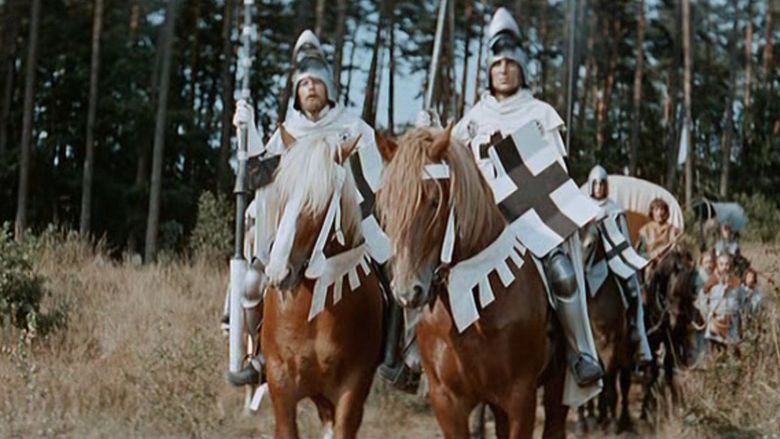
An Eastern European blockbuster epic that more than rivals the best of the West. Shot in Eastmancolor and Dyaliscope, with a cast of hundreds, plus tens of thousands of extras, its’s and adaptation of Nobel prize winner Henry Sienkiewicz’s novel, and an Eastern European box office champion for years to come. And for a good reason-there is much to enjoy.
This tale of Polish resistance to the Teutonic onslaught is masterfully made. A strong story, coupled with tremendous production values and excellent acting. Castles and palaces, armor and weaponry-everything brims with authenticity, scored with appropriately epic music. Masterful, too, is the continuing change of pace-from the intimate, “chamber” episodes to large-scale battles-culminating with the legendary battle of Grunewald.
The cast does a superb job of convincing the viewer that they really are the knights and nobility. And the cinematography/production design is appropriately epic.
In addition to some of the best battle sequences ever filmed (with long, encompassing tracking shots), there is amazing scenery (the snowy landscape with gallows is unforgettable) and interior lighting quality of the highest order. Fifteen years after the end of World War II, Ford gives his people a Poland vs. Germany story to be proud of.
10. Mother Joan of the Angels (1961). Dir. by Jerzy Kawalerowicz
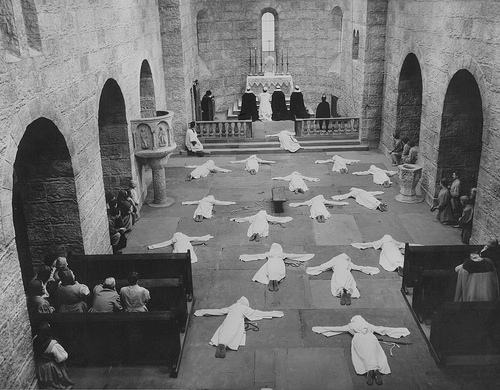
A stunning and deeply affecting religious horror-drama, condemned by Vatican. The fact that it came from a very-Catholic Poland is more stunning still. Kawalerowicz took an actual story that happened in the XVIIth century France and transplanted it onto his native land. It’s about an experienced priest who is sent to a remote monastery on an emergency exorcism mission, to save the nuns, most of whom are inexplicably possessed. The place already claimed several of his fellow priests, so the fight for the souls promises to be a spirited one.
This grim tale is told in a fantastic high-contrast black-and-white imagery that Bergman himself would be proud of, with lighting and angles that recall the best of the German Expressionism. Telling symbols abound-an overturned cross, a toppled church bell, an axe (which serves the purpose of Chekhov’s Act I gun on the wall). If not for language, it would be hard to believe that this masterpiece came from a Communist country.
Acting is characteristically good, particularly by Lucyna Winnicka’s turn as the titular heroine (she is even better here than in Knights of the Teutonic Order, where she also shone). Kawalerowicz and his co-writer Tadeusz Konwicki (see #7) skillfully show what an oppressive and claustrophobic environment can lead to. It’s very telling that the “flooziest” of the nuns is the only one who remains unaffected.
The great Jerzy Wojcik’s camera captures every emotion. Of particular note is the theological debate scene between a priest and a rabbi, played by the same actor, and captured in a classical Hollywood shot-reverse shot way. Overall, a somewhat disturbing, but a singularly unforgettable experience.
11. Knife in the Water (1962). Dir. by Roman Polanski
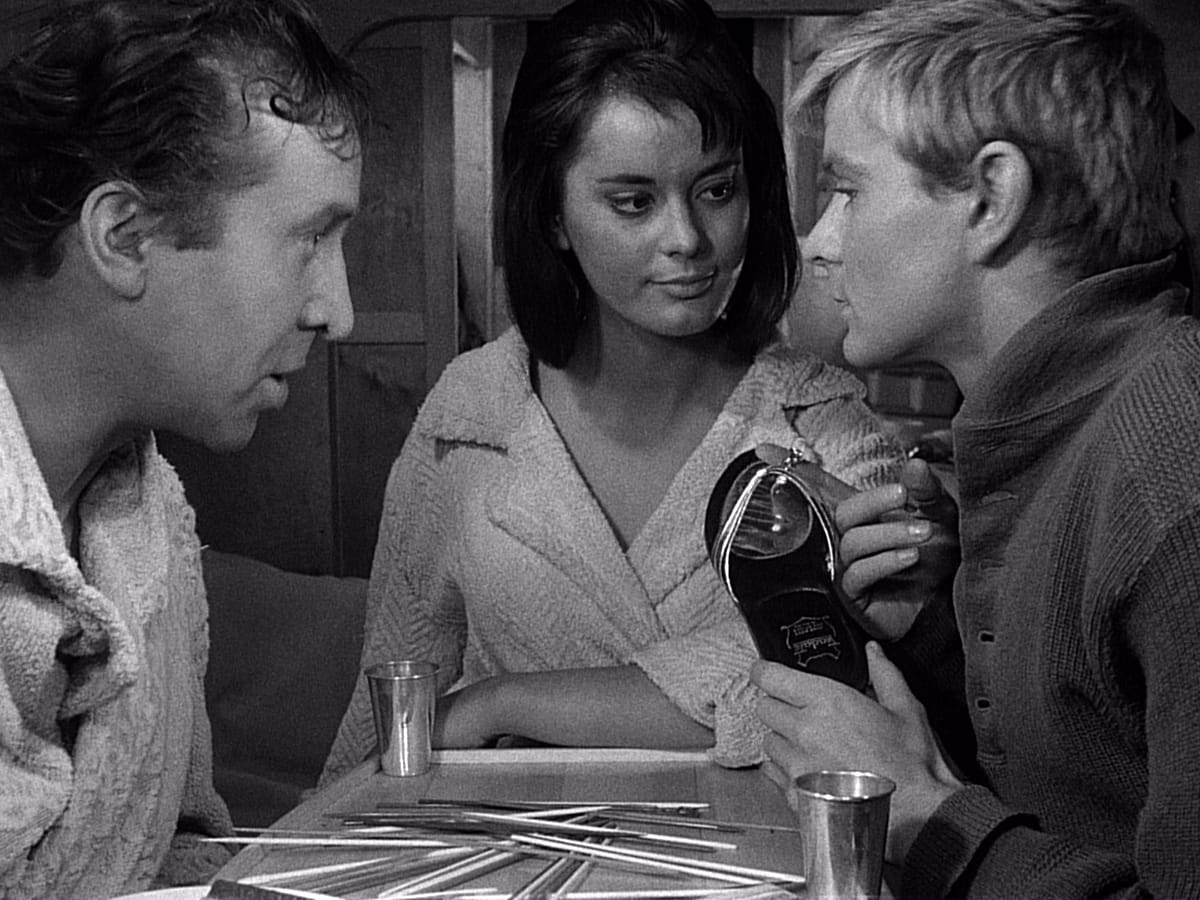
Polanski’s first feature and a ticket to the West, this one belongs here like no other due to the style being its dominant theme. The setting is minimalist, and the story is outwardly simple. A prosperous married couple invites a young hitchhiker to go on a lake sailing trip with them, resulting in generational and psychological conflict, as well as much moral ambiguity. Really, the story is the film’s weakest point. But stylistically, Polanski charges swinging from the gate!
The attention to detail that would come to mark his later masterpieces (Chinatown, Rosemary’s Baby, Tess) is already evident, as is the Hitchcock-surpassing gift of creating an almost unbearably tense atmosphere. For a feature debut, the mastery of camera and framing is simply astonishing. The viewer can hope for no better black-and-white imagery, ripe with symbolism and almost impeccable in construction.
The unique angles will stay with you, and many scenes are frame-worthy (for example, a shot of a woman tanning on the yacht deck, shot en face, and with the lake and island in the background, among others). The nervy jazz score (rather popular with Polish filmmakers at the time in contemporary-set films) also adds to overall brilliant dance of light and shadow.
Although the dramatic tension slacks at times, and the young director overdoes it with ambiguity and leaving questions unanswered-the style of the film renders it still extremely watchable, and overall it greatly foreshadows both Polanski’s future cinematic triumphs and personal demons.
12. The Passenger (1963). Dir. by Andrzej Munk
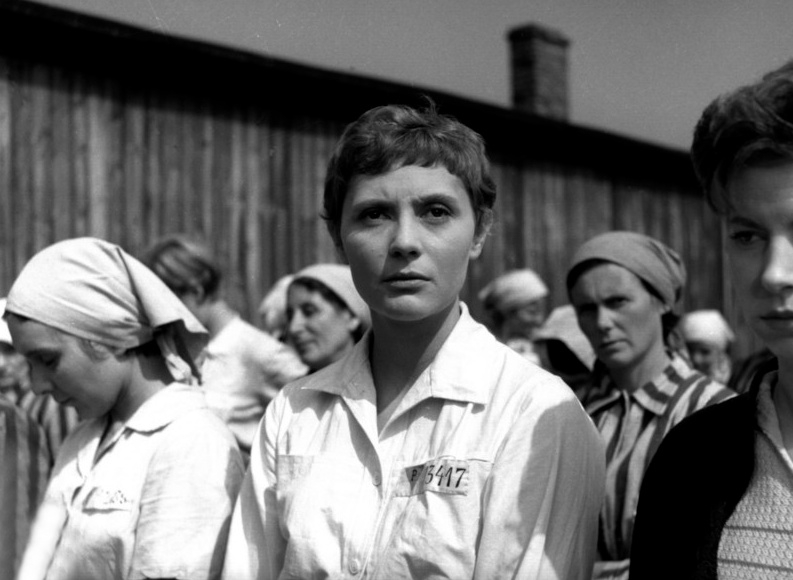
One of the most visually unique films ever made-but for a very tragic reason. During the shooting, the talented young director died in a car accident. The film was completed by his assistant Witold Lesiewicz, the original play’s author Sofia Posmysz-Piasecka, and writer Victor Voroshilovsky. They all realized that it would be impossible to bring Munk’s vision to screen without him, so instead they opted to edit it as is.
The story is about two women who run into each other on board of a luxurious Trans-Atlantic liner. It turns out that one was an inmate at the concentration camp, and the other-a guard. At the center is their differing points of view on the tragic events. By the time of Munk’s tragic death, the concentration camp sequences were already shot, but the one on the liner (the present) existed only in form of production stills.
Munk’s collaborators opted to edit them together based on the scripts and storyboards he left behind. The result is the unique visual experience-the long and grim concentration camp shots are interspersed with a flash-montage of stills. Even the surviving footage reveals Munk’s unique talent-he opted to train the camera on the faces of heroines, while the death camp atrocities are glimpsed in the background.
As a result, the message is successfully conveyed-the subjectivity of human memory and the ambiguity of motivations, not unlike much of Luis Bunuel’s works. The film remains a satisfying monument for the untimely gone talent.
13. The Saragossa Manuscript (1964). Dir. by Wojciech Has
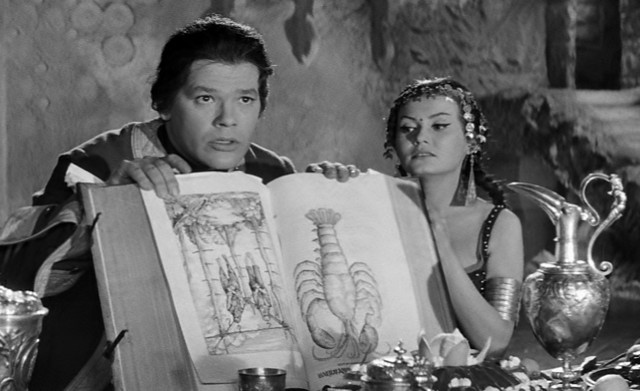
The stories that intertwine like gypsy dancers. The imagery that one cannot unsee. The riddle, wrapped in enigma, enshrouded in mystery. This is a long and fantastic adaptation of Jan Potocki’s 1813 novel, which hugely influenced the Surrealist movement about a hundred years later.
Among its admirers are such different artists as Luis Bunuel, Neil Gaiman, Jerry Garcia, and Martin Scorsese. For a good reason-it’s a gift that keeps on giving. Just untangling the plot ends and figuring out where one story ends and the other begins will consume many happy hours. Has does the film full justice, rolling out the macabre and phantasmagorical imagery in all its glory, and utilizing the wide screen to paint sprawling, crisp, monochromatic celluloid canvases.
The leads do not disappoint either, especially the talented Zbigniew Cybulski and the gorgeous Beata Tyskiewicz. Any further descriptions won’t do it justice-in fact, instead of reading it, you could be watching it right now.
14. Identification Marks: None (1964). Dir. by Jerzy Skolimowski
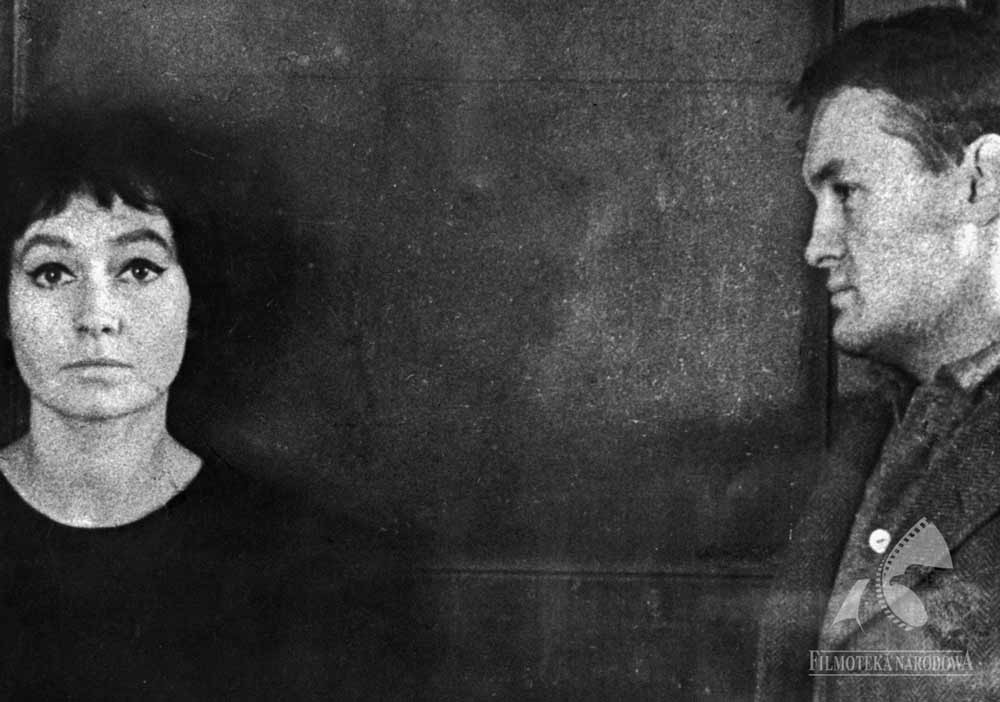
More known to American viewer as an actor (usually, a bit part with a Slavic accent-in White Nights, Mars Attacks!, Eastern Promises, etc.), Jerzy Skolimowski here makes his feature debut as a director, successfully creating a lively, episodic, off-beat, and non-conformist film. One the first day of his military service and due soon on the departing train, a young man visits his estranged wife, and finds time to catch up with a plethora of other characters.
Journey is symbolic-forced by life to “adult”, the protagonist, in a way, looks over the life he lived thus far, before beginning a new chapter. It echoes “Rebel Without a Cause” and the films of British “angry young men”, though its wry humor makes it more of a companion piece with the great Czech “Closely Watched Trains”, making it an almost atypical Polish film (where more often than not the creators are decidedly more serious than their Czech colleagues).
However, Skolimowski spent a part of his childhood in Prague, where his school classmates included future cinema greats Milos Forman and Ivan Passer. He shows that film school in Lodz and several shorts he made before this debut taught him well-this a very technically accomplished film, full of rewards.
Particularly impressive is the use of the tracking shot-camera glides through the streets, follows characters down flights of stairs, keeping the pace fluid and moving. A sequence of a girl walking through the timber plant is particularly impressive. This film was one of several that offered many lessons to future filmmakers of the Western indie movement.
15. Salto (1965). Dir. by Tadeusz Konwicki
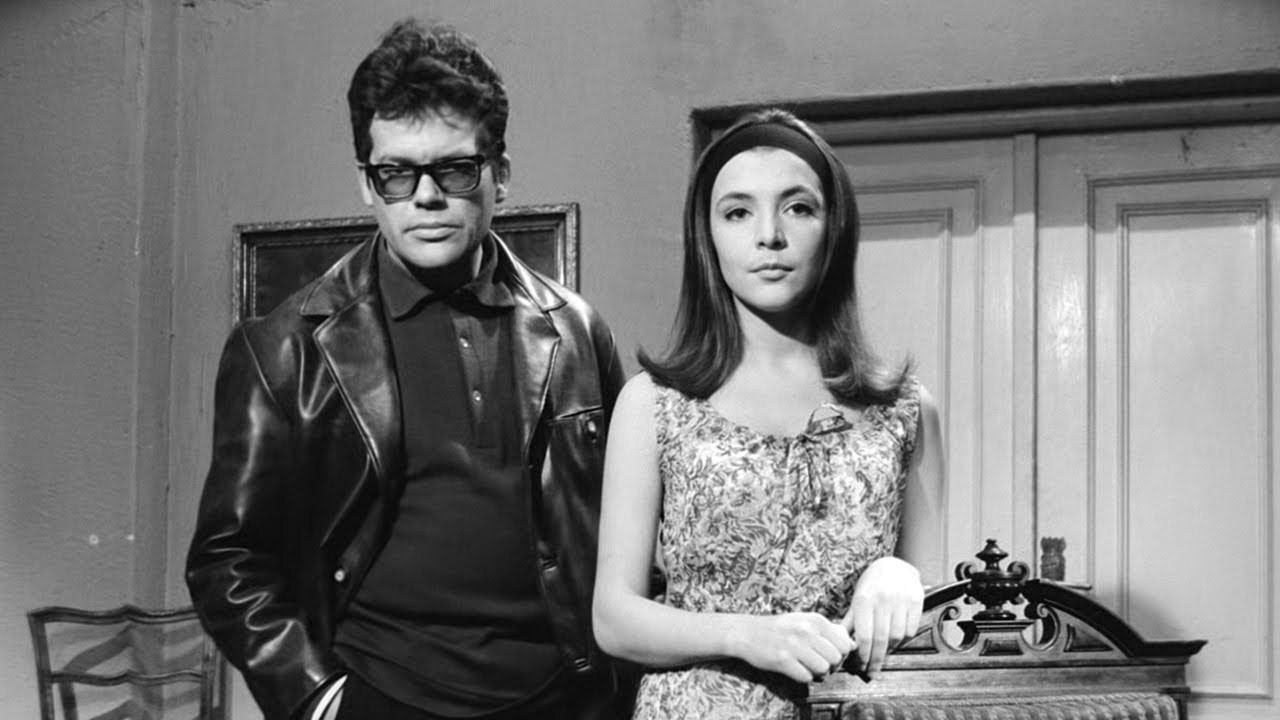
Konwicki is back to his modernistic tricks again, creating a sort of Polish “Man With No Name” character set in the “Last Year in Marienbad” (in about two years, Alain Robbe-Grillet would direct a very similarly themed “The Man Who Lies”), and mixing a strong potion of Freud, Marx, and Kafka.
The great Zbigniew Cybulski shines again in the lead role of a mysterious man who arrives into a small provincial town by jumping from a moving train. But who is he-angelic prophet or a compulsive liar? Maybe both? Throughout, the camera remains dead-on the protagonist, with the townsfolk being at times almost relegated to the role of his shadows, even when he talks his spiel to them.
All builds up toward a tense yet rewarding ballroom scene, where people are presented almost talking complete gibberish, while moving around in a sort of carnivalesque, macabre waltz. That, and the rhythmic dance the newcomer teaches them (to a clangy, percussive, almost Tom Waits-like tune) are the only two moments when music appears. The rest of the soundtrack is composed of natural sounds and cryptic dialogue.
The distorted transitions jarringly cut through the smooth camerawork, each jump-cut being soon almost felt. In the end, the hero escapes town the same way he came in (by jumping onto a moving train). In real life, Cybulski famously died by slipping under while jumping onto a train about two years later, giving this film an entirely new sensation.
16. Pharaoh (1966). Dir. by Jerzy Kawalerowicz
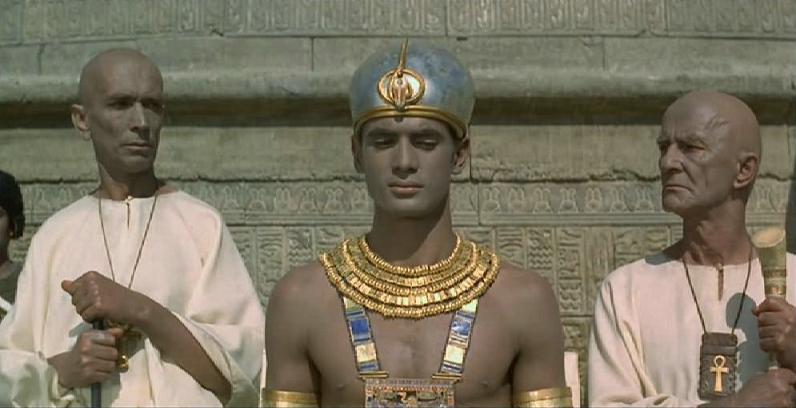
39th Academy Awards remains a head-scratcher, at least in the Foreign Language Film category. Just how can the saccharine “A Man and a Woman” triumph over films like the epic “Battle of Algiers”, surreal “Three”, or bitingly perfect “Loves of a Blonde” is anyone’s guess. The fourth of those snubbed was this sandal saga, a perfect proof that an epic three-volume novel can, in fact, be successfully made into an epic three-hour film. In a perfect world, it would give “Battle of Algiers” some serious competition for top honors.
Jerzy Kawalerowicz hits full stride here, making it his third hit in a row (see #’s 8 and 10). Moving from the confines of passenger cars and cloisters, he conquers the desert. The ever-talented writer Tadeusz Konwicki (see #’7 and 15) continues his successful collaboration with Kawalerowicz, deftly whittling down Boleslav Prus’s novel into manageable script.
The story is very much “Game of Thrones” in the sands, theme-wise. Ramses the XIII (lucky number), a young pharaoh of the title, ascends onto the throne of Egypt, only to find out that high priests are the ones that wield real power in his kingdom, thus setting off an epic confrontation of secular vs. religious powers (while also forcing him to combat his own passions and demons). One of the reasons Kawalerowicz gave for turning to this material is its topicality, and he’s perfectly right there-the struggle continues to this day, in one form or another, in various parts of the world. To this serious content, he gives astonishing form.
The sweeping widescreen compositions rival those of “Lawrence of Arabia”. While the crew was able to shoot some scenes on location at the pyramids of Giza, most of the crowd scenes were shot in the Kyzyl-Kum desert of Uzbekistan-yet nothing is taken away from the continuity, while the sense of red-hot passions is enhanced (it generally gets to about 122 deg. F in the sun there).
The good script job allows Kawalerowicz to take his time and have actors deliver lines at a necessarily measured pace, while editing is kept unrushed. The authenticity is further promoted with great costumes, none of which strike out of the ordinary (a mark of an excellent costume designer job). With one very notable exception, the cast rises to the task-the viewer soon believes that these Poles are ancient Egyptians/Hebrews/Phoenicians. Sadly, the exception is the titular role-Jerzy Zelnik fails to connect as both Ramses and his look-alike (a challenging task), and remains rather limp and lukewarm throughout.
However, the rest of the cast does not disappoint. Two female supporting actresses particularly stand out-Barbara Brylska as a Phoenician priestess of Astarte and Krystyna Mikolaewska as Sarah, the Jewish concubine of Ramses. They steal the scenes they’re in, give the film another dimension, and are so easy on the eye that one realizes-it’s good to be Pharaoh.
17. The Devil (1972). Dir. by Andrzej Zulawski
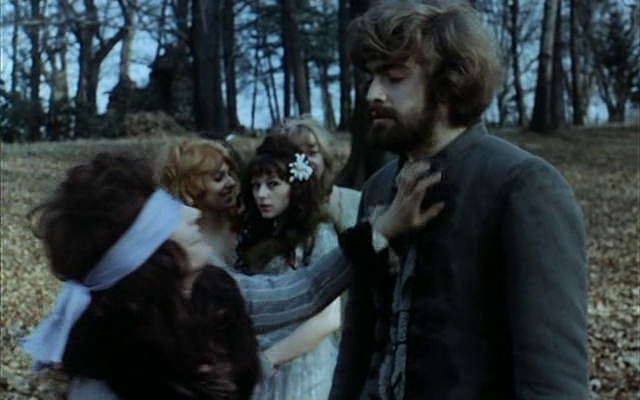
Though 1988 “On the Silver Globe” is arguably the most iconic of Zulawski’s mad genius creations, this one established him as a wild and weird talent like nothing else Poland (or any other country) have seen so far. No wonder it was immediately banned in Poland and in every country of the Eastern Bloc-even the decadent capitalists have never created something so gory and merciless.
The film chronicles a downward spiral journey of a 1793 Polish revolutionary nobleman. Saved from jail and possibly the gallows by a mysterious stranger (spoiler alert-it’s The Devil), he undertakes a progressively delirious journey across his war-torn homeland, losing mind and resorting to a series of progressively violent murders as means to cope with general chaos and disorder.
The narrative itself not so much progresses as it falls apart together with the protagonist’s sanity. The man-made nature of the violence is underscored by many “theatrical” scenes-the travelling players, circus, bleeding Hamlet, naked Ophelia in the woods. Be warned-Zulawski pulls no punches, and even the Western viewer may be shocked by overt and crescendo violence.
The flames that engulf all in the end come as a sort of relief. A rarity-the Catholics were united with the Commies in condemning the film. Zulawski had no choice but to escape to France, where he made all his films until the late 80’s.